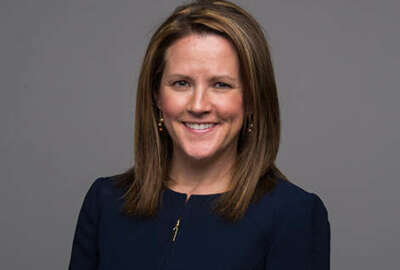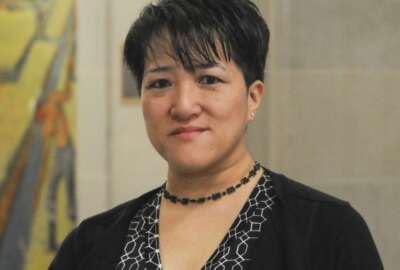 Exclusive
Exclusive IT executive retirements hit USDA, Commerce while HHS, GSA lose key personnel
Kelly Morrison, a senior advisor at USAID, and Mona Siddiqui, the HHS CDO, are among several federal technology executives who are moving to the private sector in...
The end of any calendar year usually means change in the federal community. Whether because of retirements or federal executives moving to new jobs in the public or private sector, there are a lot of people on the move.
So here are some of the prominent changes that happened over the last two months. To be sure, this is by no means a complete list but one that we’ve cobbled together from assorted sources. If we missed anyone, please let me know.
The Federal Deposit Insurance Corporation has a new chief information officer. The departments of Commerce, Agriculture, and Health and Human Services; and the U.S. Agency for International Development have or will have openings in their IT shops for executive-level positions.

These are among the notable comings and goings in the federal IT community over the last two months.
Moves at FDIC, USDA, Commerce
Sylvia Burns is the new CIO at the FDIC, replacing Howard Whyte, who left earlier this month to take a new job in the private sector. Whyte spent his three years at the FDIC addressing long-time technology challenges around cybersecurity, workforce skilling and moving the agency to the cloud.
Meanwhile, Burns has been with the FDIC for almost two years as its deputy CIO. Previously, she spent four years as the Interior Department’s top technology executive.
FDIC Chairwoman Jelena McWilliams called Burns in a release the “perfect choice” to continue to modernize and secure the agency’s data and systems.
Burns is expected to continue in that same direction bringing her experience from Interior where she pushed that agency into the cloud early and attempted to modernize other services.
While the FDIC has a new CIO, USDA and Commerce are both looking for new IT executives.
Rory Schultz, the client executive for customer service and former deputy CIO at USDA, announced he is retiring from government on Feb. 28. Schultz came into that role as part of the USDA reorganization and modernization effort.
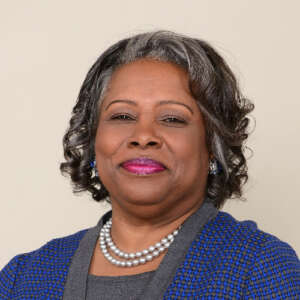
“I plan to be off for a couple months and then go back to work as a contractor in May of 2020,” Schultz wrote on Linkedin. “I’m interested in work as a consultant, as a CTO, or as an operations manager, all of which I am well qualified for and which interests me. No decisions yet although I have started some discussions with small and medium-sized women-owned businesses. That said I am pretty well able to work anywhere, be it small, large or medium.”
Schultz has been with USDA for almost 10 years and before that worked at the Treasury Department for seven years as the director of headquarters IT. In all Schultz has 33 years in government, starting as a summer intern and research analyst with the Executive Office of the President during the Reagan Administration and then returning as a GS-4 research analyst with the Records Management Branch at the Treasury Department.
Over at Commerce, Renee Macklin, the agency’s director of IT shared services, retired on Dec. 31, according to a note sent to colleagues at AFFIRM. Macklin was the government vice president of programs at the organization.
As the director of IT shared services, Macklin oversaw enterprise services across areas like human resources, and acquisition for Commerce bureaus. She helped implement automation and improved processes leading to cost savings and better decision making for the agency.
She joined government service in 2001 as the CIO of the International Trade Administration. Macklin spent just under two years at the Small Business Administration’s CIO before coming to Commerce in 2015.
GSA’s NewPay loses second top exec. since September

Finally, HHS is looking for a new deputy CIO for enterprise services. Amy Haseltine joined the General Services Administration in October as the NewPay director under GSA’s human resources quality service management office (QSMO). She replaced David Vargas, who joined the Department of Housing and Urban Development in September as the acting deputy assistant secretary of the Real Estate Assessment Center. Vargas had joined GSA in August 2018 from the Office of Personnel Management to oversee GSA’s new service management office.
This means the top two executives for NewPay, the administration’s strategy to modernize federal payroll services using software-as-a-service, left since September. Beth Angerman, who was the principal deputy associate administrator in the Office of Governmentwide Policy, left in December to take some time off and potentially join the private sector.
Haseltine, who spent 13 years at HHS, will try to bring some momentum to NewPay, which the Government Accountability Office reported in April ongoing planning and implementation challenges.
Haseltine, who has spent more than 30 years in government, is no stranger to this type of challenge, helping to turn around HHS’ Federal IT Acquisition Reform Act (FITARA) efforts.
There are a few other notable changes in the federal technology sector, but outside of the CIO world.
Kelly Morrison, who came to USAID in April to help the CIO’s office coordinate technology across the agency’s development assistance efforts, is leaving to join Grant Thornton at the end of January.

At the private sector firm, Morrison will be a director leading Grant Thornton’s Technology Business Management (TBM) practice.
HHS CDO moves on after 3 years
Also at HHS, Mona Siddiqui announced she was leaving as the agency’s chief data officer to become vice president at Humana Corp., according to a report in Politico.
She has been CDO for three years and before that worked at the Johns Hopkins School of Medicine as an associate professor and researcher.
“I am immensely proud of everything that the data team has accomplished and will continue to drive: developing a technology stack to enable enterprise data sharing, implementing a data governance approach, establishing a data science and artificial intelligence training program and consistently working with a broad group of stakeholders to move the department forward in its strategy on opioids, AI, data privacy, collaboration with states and social determinants of health,” Siddiqui wrote in a Jan. 16 blog post.
Finally, GSA also is losing a key technology acquisition leader. Sources have confirmed that Amando Gavino, the director for the Office of Information Technology Services for the Information Technology Category (ITC) at the Federal Acquisition Service, left on Jan. 17.
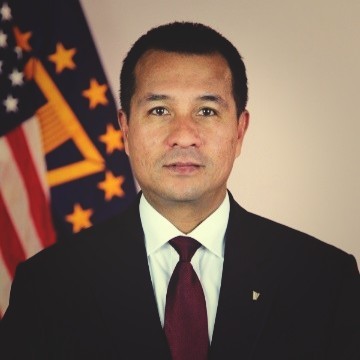
Sources said he is heading to a new agency, but he didn’t disclose which one. A GSA spokesman wouldn’t confirm Gavino is leaving.
But sources said Gavino will take some time off before returning to government. Carlton Shufflebarger, the deputy director in the Office of Telecommunications Services in the ITC at FAS, is expected to be the interim director.
Before coming to GSA in 2014 where he led the Office of Telecommunications, Gavino spent 27 years in the Air Force, retiring as a colonel. He held numerous leadership positions as communications director, including director of command, control, communications and computer (C4) systems for the Air Force’s Central Command and the Combined Air and Space Operations Center.
Shufflebarger has been with GSA since 2008, previously spending 19 years at the U.S. Postal Service.
Acquisition, human resources changes
Two other significant but non-IT related changes in the federal community worth mentioning.
Bob Gibbs, the NASA chief human capital officer, is getting a promotion to become an associate administrator for mission support directorate. He will oversee not just human resources, but all headquarters back-office operations, including procurement, protective services and shared services.
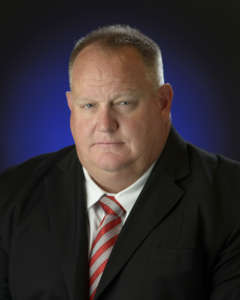
Gibbs came to NASA from the Energy Department in May 2017, and has been in government since 1987 where he started as a Naval supply officer.
Over at the Department of Veterans Affairs, Anil Tilbe took over as the new director at the Office of Accountability and Whistleblower Protection.
He spent the last three years as VA’s deputy director of enterprise measurement and design at the Veterans Experience Office. He began working at VA in 2011 in the Office of Information and Technology.
Finally, Ben McMartin, who spent the last 10 years working in Army contracting, joined the Public Spend Forum in December as a managing partner. McMartin did more than work in contracting — he ran the Army’s Other Transaction Agreement consortium around ground vehicles and led the Acquisition Innovation Roadshow, to help promote new federal procurement concepts across the military.
At the Public Spend Forum, McMartin will focus on training, education and consulting to improve public sector acquisition processes.
Copyright © 2025 Federal News Network. All rights reserved. This website is not intended for users located within the European Economic Area.
Jason Miller is executive editor of Federal News Network and directs news coverage on the people, policy and programs of the federal government.
Follow @jmillerWFED






